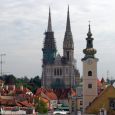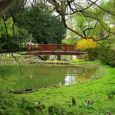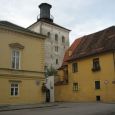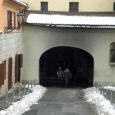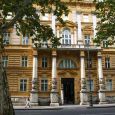Zagreb
Advertisement
By Ferry
Ferries from Italian ports such as Venice, Ancona and Pescara arrive in Dalamatian coastal towns including Pirano, Split and Zara, from where you can get buses or trains to Zagreb or alternatively, hire a car and drive.
By Rail
Zagreb is well connected to other European cities by rail, with daily international services to Munich, Vienna, Venice, Budapest, Paris, Geneva, Graz and Moscow. Trains arrive and depart from Main Railway Station, which is right in the heart of the city at Kralj Tomislav Square.
By Bus
Long distance buses connect Zagreb with main cities and towns across Croatia and in neighbouring countries. Long distance buses arrive and depart from Central Bus Station, located on Marin Drzic avenue, a few minutes by tram (line number 6) from the central city square.
By Car
Zagreb is at the crossroads of travel between the southern part of eastern and western Europe, and there are four main routes leading to and from the city. The E70 connects Trieste-Ljubljana-Zagreb; the E63, Klagenfurt-Ljubljana-Zagreb; the E59, Graz-Maribor-Zagreb; and the E65, Budapest-Varazdin-Zagreb. Although the motorways are modern, many of them are in need of repair and care should be taken not to drive at excessive speeds.
Zagreb Cathedral
Perhaps the most stunning example of Zagreb’s architectural heritage is the ancient Gothic cathedral in the Kaptol district. A masterpiece of construction, the cathedral has existed in some form since the 10th century, although the Gothic structure was built between the 13th and 15th centuries. Parts of the cathedral were destroyed and rebuilt over the centuries, with some sections now in a neo-Gothic style. The interior shows the architectural influences of many centuries, with Baroque altars tastefully blending with Gothic, Renaissance and neo-Gothic decorative elements. Rounding out the cathedral’s attractions are several exquisite artworks.
Archeological Museum
Zagreb's Archeological Museum (Arheoloski Muzej) has five main collections, with the general focus being on Croatia. There are approximately 400,000 pieces from Croatia, many of which are from the Zagreb area. The five sections include prehistoric, Egyptian, ancient, medieval, and coins.
On display are Egyptian mummies, the cloth from the Mummy of Zagreb showing script in Etruscan which has yet to be deciphered, Greek vases, and a medieval section focusing on the "Great Migrations of the Peoples". One of the most important pieces in the Archeological Museum is the Head of Plautilla from the ancient town of Salona. The extensive coin collection includes Greek, Celtic
, Roman, Byzantine and modern pieces and is considered one of the best in Europe.
The Archeological Museum is housed in the Vraniczany-Hafner Palace and has an outdoor style café in the summer.
Botanical Garden
The Botanical Garden (Botanicki Vrt) in Zagreb was originally built as a research area for the Zagreb University's Faculty of Botany. It was designed by botany professor Antun Heinz, and encompasses approximately 50,000 sq m / 540,000 sq ft. The park is part of the series of parks which form the "green horseshoe" in Donji Grad.
On the grounds are an arboretum, two ponds which are home to a variety of aquatic plants, an ornamental bridge, and plants from all over the world with some 10,000 different plant species. The Botanical Garden is a nice escape from the city and a great place to relax or take a walk in the Lower Town.
Lotrscak Tower
Standing sentinel over St Catherine’s Church and its square is the ancient 14th century Lotrascak Tower, which was once a vital part of the city’s fortification system. Today, the tower affords stunning panoramas of Zagreb’s Kaptol and Lower Town districts and the hinterland. In particular, the view along Strossmayer Promenade is fantastic. Lotrscak Tower is the last stop on the vintage funicular railway.
Kamenita Vrata Gate
The so-called Stone Gate is the last remaining ancient city gate in Zagreb and was once the entrance to the Upper Town district. The gate has been in existence since the Middle Ages, but the present incarnation dates from 1760. The shops surrounding the Stone Gate have retained their original façades and lend a charming ambience to the district.
April - October


